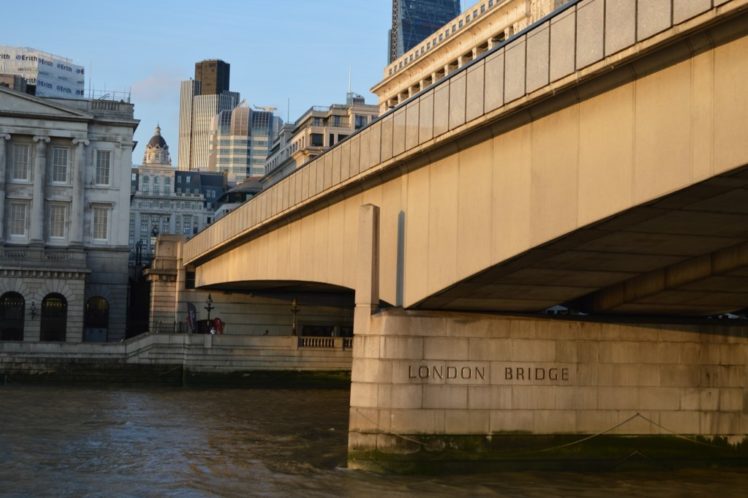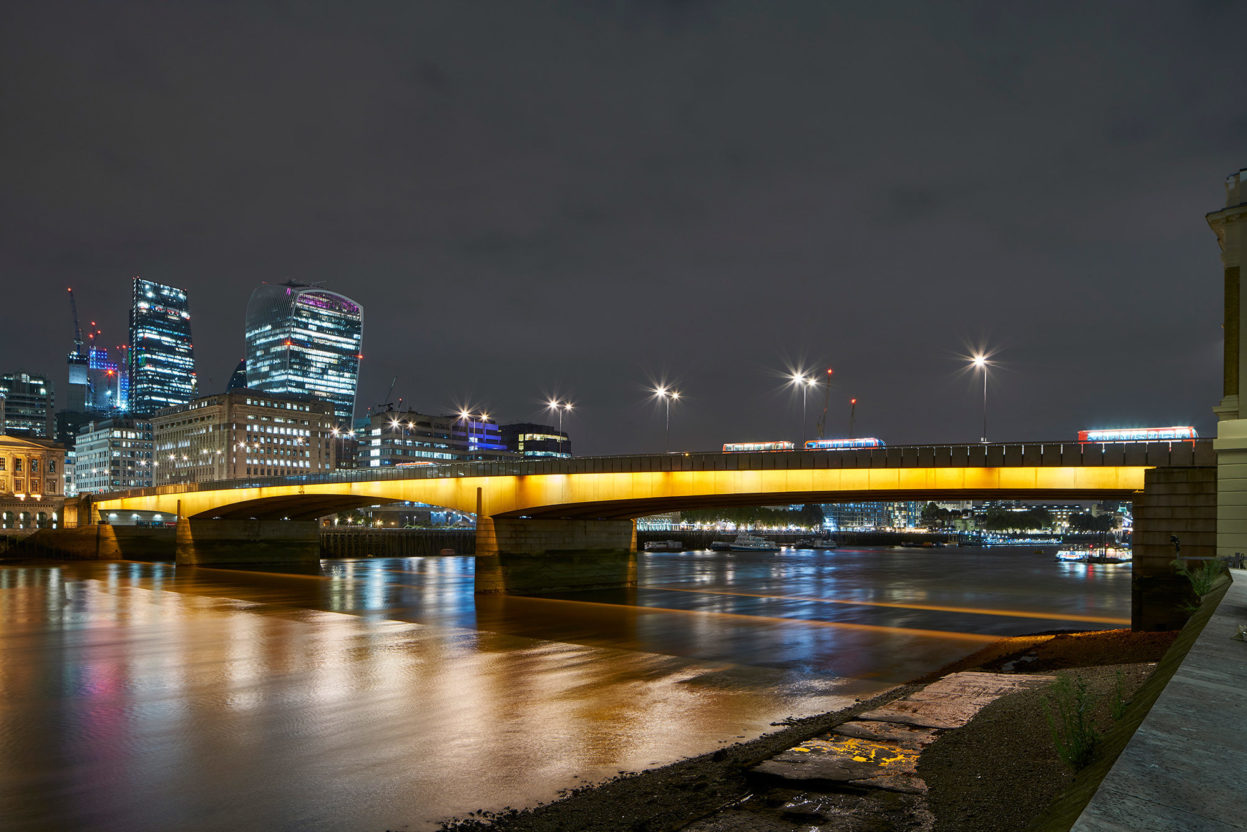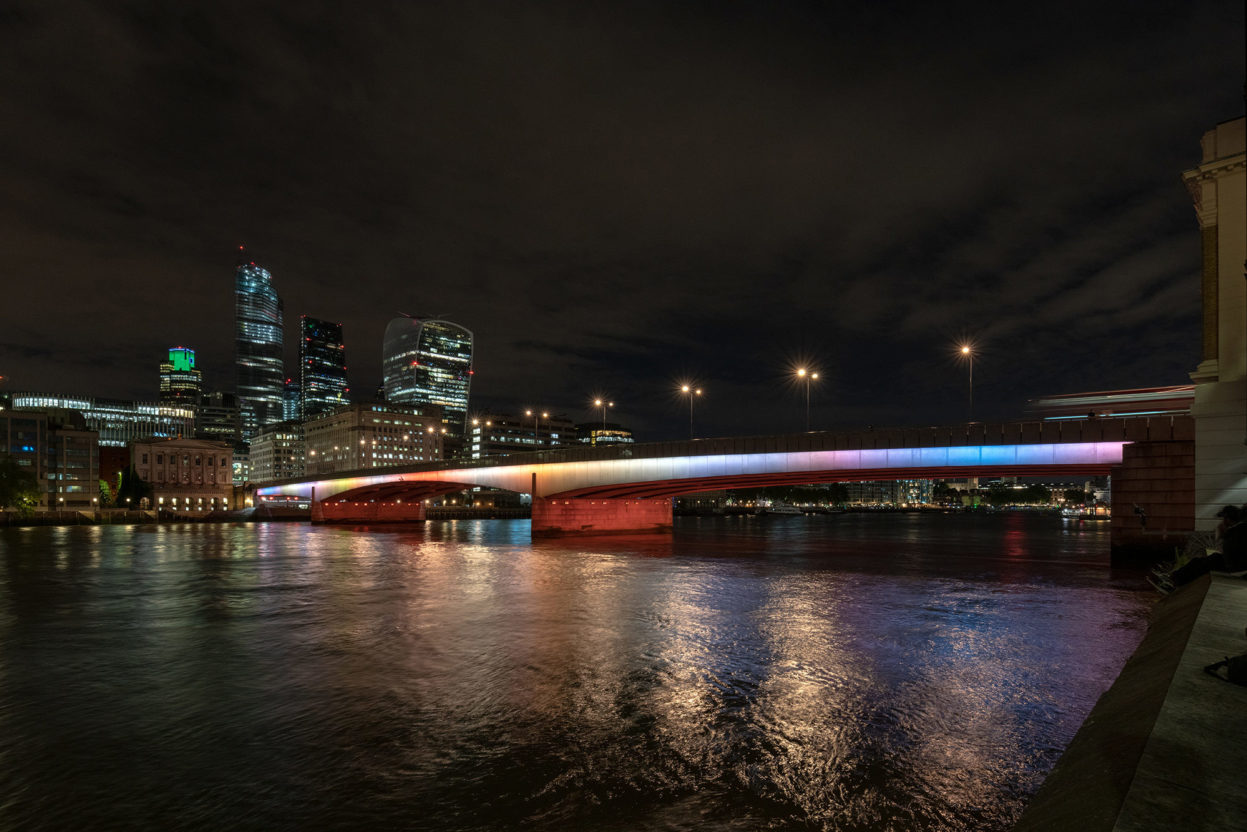London Bridge
Summer 2019
- Modes
- Owner
- Bridge House Estates
- Completed
- 1973
- Designer
- Lord Holford, Mott Hay & Anderson
There has been a bridge on this site for almost as long as there has been a city of London. The first bridge was erected over 2,000 years ago, with successive bridges built by the Romans, William the Conqueror and King John.
In 1014 the Danes had seized London. In an effort to reclaim the English crown, the Saxon King Ethelred the Unready attacked the bridge with the help of a Viking raiding party led by King of Olaf of Norway. They sailed up the Thames, tied their boats to the wooden bridge supports and rowed away on the tide, pulling the bridge down behind them and giving rise to the famous song ‘London Bridge is Falling Down.’
During the Tudor period around 600 buildings lined the bridge, some over six stories tall. In fact it was so heavily populated that it became a ward of the city. The heads of traitors used to be impaled on the poles of the bridge’s gatehouse, among them William Wallace (d.1305), Thomas More (d.1535) and Thomas Cromwell (d.1540).
In 1722, when the carts, coaches and carriages caused too much congestion on London Bridge, the Lord Mayor decreed that all vehicles should keep to the left, which later became the rule for all roads in Britain. By 1763, the houses and shops lining the bridge were removed to provide extra clearance for the increased traffic.
A severe frost caused permanent damage to the bridge in 1813 and a design competition was arranged calling for entries for its replacement. The competition was won by architect John Rennie, with a conventional design of five stone arches, and the new bridge was built in 1831.
As cars proliferated and traffic continued to increase, in the 1960s the bridge began to sink at one end. In 1968, the structure was purchased for £1 million (then $2.4 million) by the McCulloch Oil Corporation, who shipped the bridge across the Atlantic and re-erected it, piece-by-piece, over Lake Havasu in Arizona. There is no foundation, alas, to the urban myth that the purchasers mistakenly thought that had bought Tower rather than London Bridge.
Completed in 1973, the London Bridge of today was designed by William Holford & Partners. Consisting of three spans of pre-stressed concrete cantilevers, the bridge is minimalist in appearance, its only decoration the granite obelisks on the faces of the piers and the polished granite facing of the parapet walls.
The footpath on the eastern side of the bridge was made much wider than the western one to accommodate commuters arriving at London Bridge station. It is widely reported that the footpaths are heated during cold spells to prevent icing, however plans for this were never completed due to high running costs.
One Sunday every Autumn vehicle traffic is replaced by sheep for the annual Sheep Drive by Freemen of the City of London, a practice that dates back to the 12th century.

Artist’s Vision
Villareal's artwork for London Bridge responds to the continuous stream of movement, colour, noise, and cultural activity in the surrounding area. The simple form and silhouette of the bridge is complemented by fields of broad and warm colour.


Left: the former lighting on London Bridge. Right: Leo Villareal’s Illuminated River artwork.
Leo Villareal discusses the inspiration behind his artwork for London Bridge.
